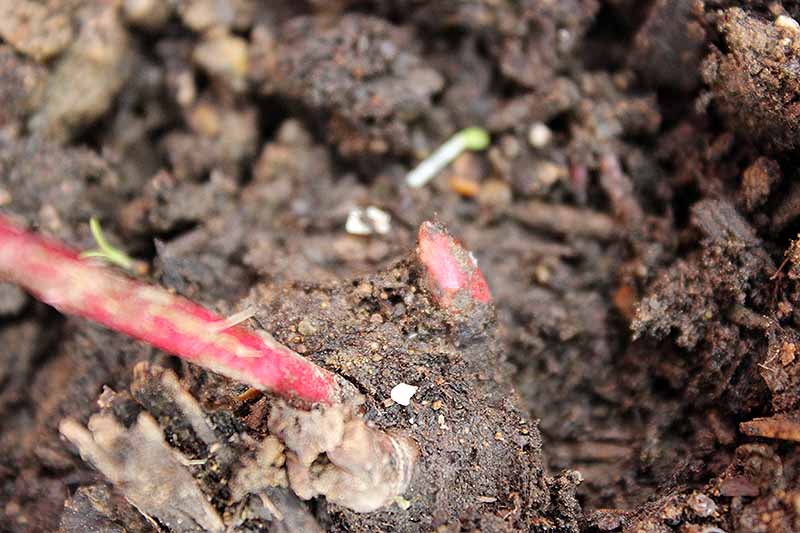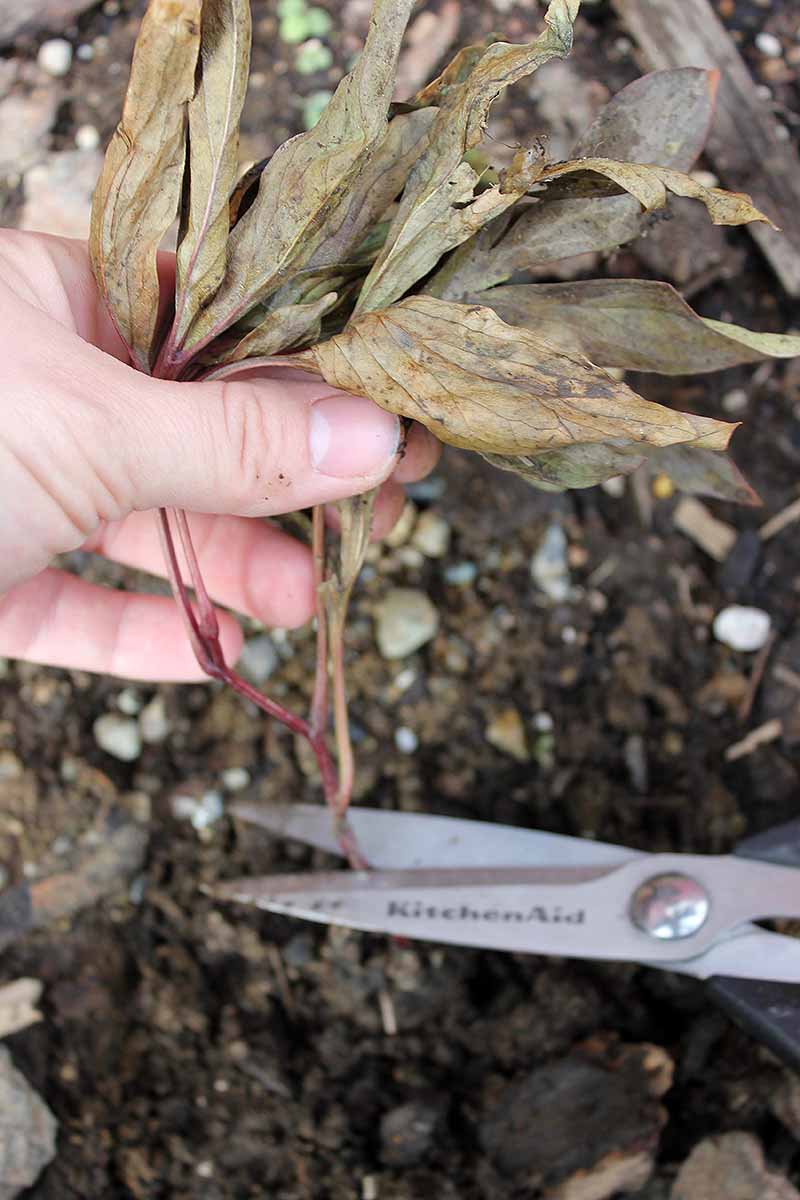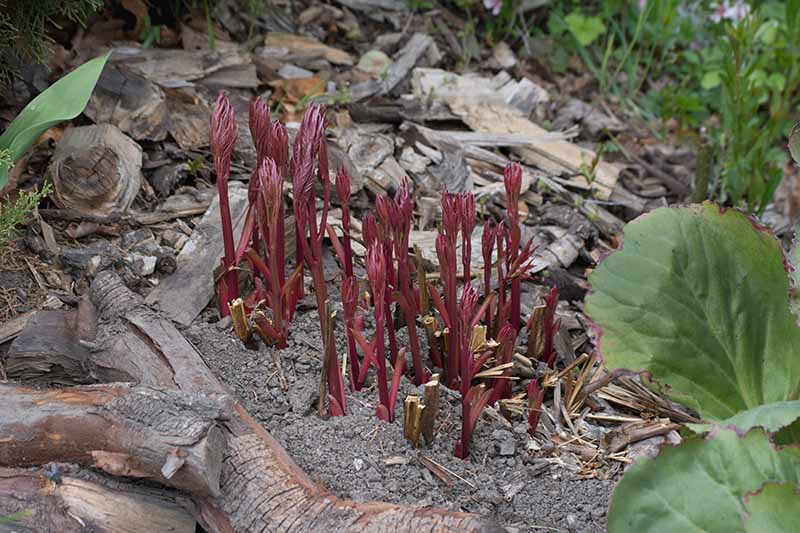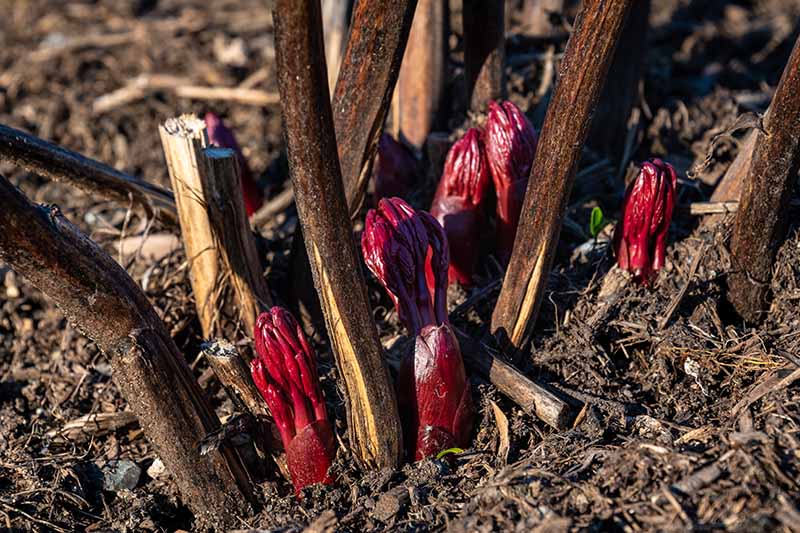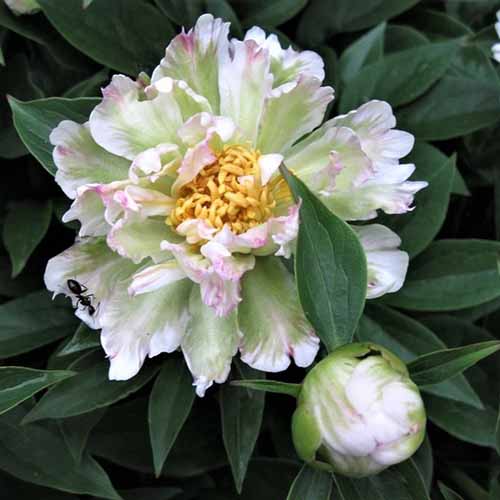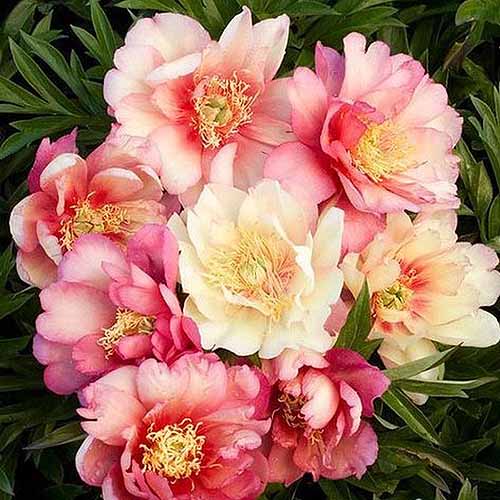I soon learned that peonies (Paeonia spp.) are a big deal here in Alaska. Lots of Alaskan gardeners grow these cold-hardy blooms, which thrive in USDA Hardiness Zones 3-8. We link to vendors to help you find relevant products. If you buy from one of our links, we may earn a commission. Depending on the cultivar, petals can be single, double, or semi-double. You can find out more about how to grow these lovely flowers and more about the different varieties in our growing guide. After reading the above descriptions, you may have gotten an inkling of what a peony plant does during wintertime. That’s right. It sleeps.
But how much dormancy does it need? How many hours of cold temperatures? And is there anything you should do to keep your peony warm during winter? In this guide, you’ll learn everything you need to know about how to care for your peonies during wintertime. Here’s what we’ll cover:
Peonies Need Cold Exposure
Here’s the funny thing about the beautiful Paeonia: you’ll actually need to pay more attention to winter care if you live in Zone 7 or 8 than you will if you are in Zone 3 or 4.
Most varieties require between 500 to 1,000 chilling hours, which amounts to approximately 20 to 42 days of temperatures between 32 and 40°F. As bud development is stimulated by chill hours, your plants need about one month of chilly wintertime weather in order to bloom in the spring. If you live in Zone 3-5, you’re pretty much guaranteed at least one month, if not six, of below-freezing temperatures. I’m looking at you, Alaska. Peonies don’t mind the extra freezing time that comes with long, cold winters, but if you live in Zones 6-8, you might struggle to get a full month of almost-freezing temperatures. But since peonies don’t grow from bulbs, it’s not a good idea to pull them up and try to force them indoors, as you might with spring-flowering bulbs. So how can you keep your peonies cold enough through a Zone 6, 7, or 8 winter? Fear not, for I have a few tips.
Watch Your Planting Depth
Peonies grow from tuberous roots with “eyes” that grow new shoots. For a Paeonia to thrive, it needs to be planted at the right depth. For those of you who live in Zones 3-5, it’s best to plant the tuber so that the little pink eyes from which the leaf stalks grow are two inches below the surface of the soil. Can you see the little pink bud in the photo below? That’s the “eye” of the plant. It’s recommended to plant it at exactly two inches deep. So get your ruler out to make sure the eyes get the planting depth they need. For those of you in Zones 6 and 7, the eyes should be planted just one inch below the surface of the soil. And in Zone 8, just half an inch below. This correct planting depth gives it the best opportunity to thrive and produce lots of gorgeous, heavy blooms. The reason for the different planting depths is that peonies in warm areas will be exposed to cooler air temperatures, while those in cold areas will stay tucked just two inches down for a bit of protection during a winter that may get as cold as -40°F.
When and How to Cut Them Back
Whether or not you should cut your plants down to the ground depends on what type of peony you’re working with. But regardless of the type, you’ll need to let all the leaves die back naturally at the end of the growing season. Once they’re nice and yellow or brown – this will generally be after the first frost in your area – it’s time to cut the stems of herbaceous cultivars to about an inch above soil level. Throw trimmed vegetation away in a garbage can instead of on a compost pile. This helps eliminate any diseases that may be lingering on the leaves from re-infecting the your plants the following spring. You don’t have to do anything special to tree types in the fall. If you wish to, you may want to prune them lightly in the spring to preserve their shape, but that’s not something to worry about yet. Learn more about how to prune peonies in our guide. (coming soon!) And as for intersectional cultivars, you’ll want to prune those back to about four to six inches in height, leaving at least one or two growth nodules on each branch. In colder regions, however, you may want to cut intersectional peonies down to about an inch above the ground as you would herbaceous varieties, as the buds might not survive aboveground for the winter. New stalks will grow in the spring, regardless. To make sure you don’t accidentally trample your precious peony in the wintertime, use a plant marker to indicate where it is located.
Should You Mulch?
The next step in keeping your peony happy during winter? Smart mulching habits, which sometimes means no mulching at all.
Since planting depth is crucial to the health of a peony, it makes sense that adding even an inch of mulch on top of the soil could impact the plant’s ability to thrive and flower. I once made the mistake of spreading mulch around the crown, and it didn’t care for that treatment. So then I moved it to my flower bed and left it un-mulched, where it was much happier! Until my dog dug it up. I think she thought it was a stick I buried just for her.
Newly planted peonies in Zones 3-5 can benefit from an extra-thin layer of breathable mulch – straw, for example – to help them stay cozy all winter long, and provide a bit of additional protection. But even if you use straw, you don’t want to place it too close to the stem of tree types. Placing mulch right up against the stems can trap unwanted moisture in the soil around the tuberous root, causing the plant to rot or acquire diseases it wouldn’t otherwise succumb to. Those in Zones 6-8 should avoid mulching altogether. You’re already planting the eyes just an inch or half an inch below the surface of the soil so that they’re exposed to as much cold air as possible. Mulch would provide them with warmth they don’t want.
Choosing the Right Cultivar
While these beautiful perennials do best in cold climates, those of you in Zones 7 and 8 and even parts of Zone 9 can help ensure success when you choose cultivars that are better adapted to your warmer climate. These types tend to do better in warm climates. ‘Green Lotus’ is an attractive, early-blooming, single flowered cultivar to grow.
‘Green Lotus’ With light green petals tipped in pink, it’s sure to catch your neighbors’ attention and captivate you each time you see it. You can find tubers for fall-planting online at Eden Brothers. Another of my favorite early bloomers is the lovely Itoh hybrid, ‘Julia Rose.’
‘Julia Rose’ With semi-double, fragrant petals in varying degrees of pink, plants can produce up to 50 blooms in a single season. Find ‘Julia Rose’ for fall planting also available from Eden Brothers.
Winter Care Means Eternal Blooms
Okay, maybe not eternal. But if you take good care of your peony plants, they’ll give you the gift of longevity. It’s well-documented that these plants can live up to a hundred years old. So they’ll probably outlive you. What a gift to the next generation! Are you growing peonies? Do you have any winter care tips to share? I’d love to hear from you in the comments section below. And for more information on growing peony flowers in your garden, check out these guides next:
9 Reasons Why Your Peony Fails to Bloom Tips for Growing Tree Peonies Understanding Different Types of Peony Flowers
Photos by Laura Melchor © Ask the Experts, LLC. ALL RIGHTS RESERVED. See our TOS for more details. Product photos via Eden Brothers. Uncredited photos: Shutterstock.




